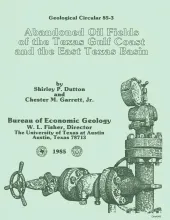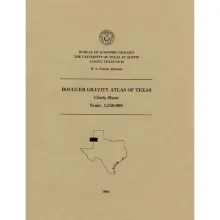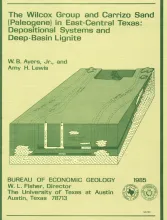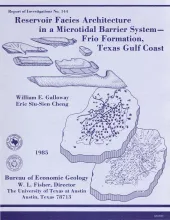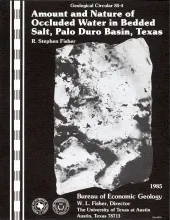One nonconventional target for increased oil recovery in Texas is oil that remains in abandoned reservoirs, defined as reservoirs that produced no oil or gas in 1977 and 1982. This target includes oil in reservoirs that were never subjected to modern secondary or tertiary recovery methods as well as oil that was not tapped by conventional field development because of reservoir heterogeneity.
This folded transparent map is at the same scale as its corresponding Geologic Atlas of Texas (GAT) sheet and can be superimposed on it to compare gravity information with surface geology.
Sandstone reservoirs deposited in microtidal barrier systems contain large oil and gas reserves in several Gulf Coast Basin plays. Three representative Frio Sandstone reservoirs in West Ranch field show that barrier-island sand bodies are complex mosaics of barrier-core, inlet-fill, flood-tidal-delta, washover-fan, barrier-flat, and shoreface facies. The proportions of these facies differ within progradational, aggradational, and transgressive barrier sand bodies.
Bedded salt of the Permian San Andres Formation, Palo Duro Basin, Texas, is under consideration for the isolation of high-level nuclear waste. To represent the variety of salt types present, 150 large (250 to 500 g), intact samples of bedded halite from the San Andres Formation and other saltbearing units were selected and then analyzed by a standardized procedure. The halite fraction of the sample was dissolved in anhydrous methanol by continuous reflux Soxhlet extraction, and the water content was measured by Karl Fischer titration.


